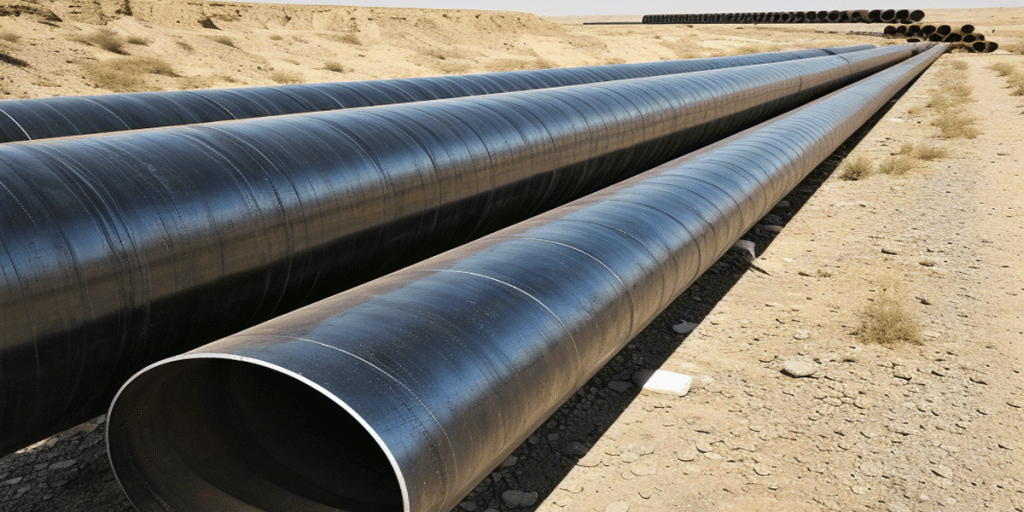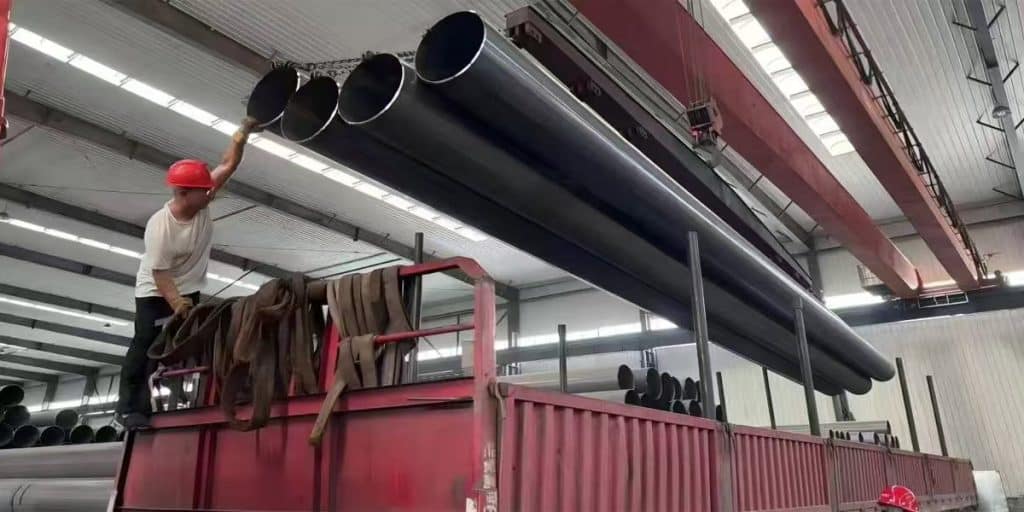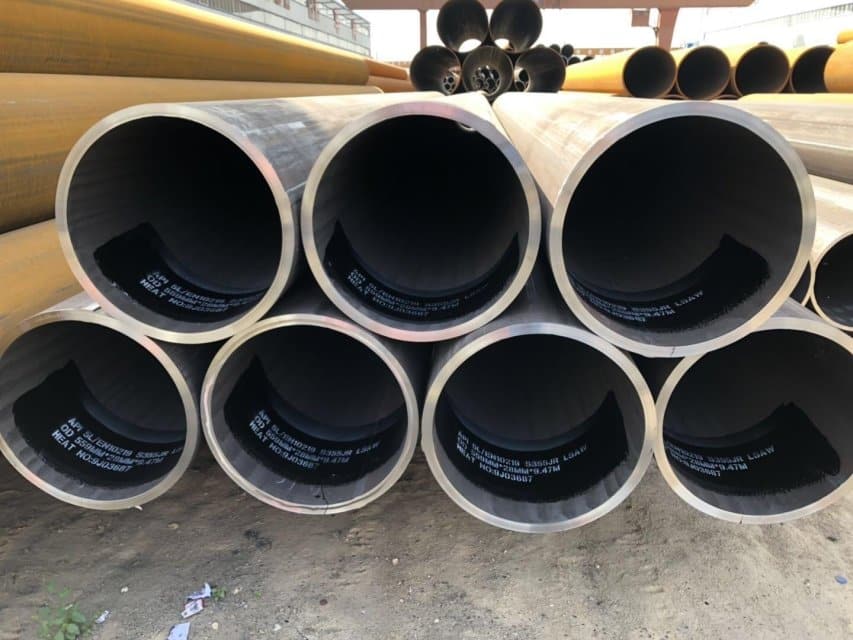- 1. Standard Basis and Performance Requirements of EN 10025-2 S235JR
- 2. Delivery Condition Differences: AR (+AR) vs +N (Normalized)
- 3. Testing Methods & Standards: Verification Matters More Than Promises
- 4. Selection Recommendations for Different Engineering Scenarios
- 5. LONGMA Quality Control System: Demonstrating “Capability,” Not Just “Promises”
- 6. Conclusion & Procurement Advice: How to Select Safely?
Among global structural steel standards, EN 10025 S235JR is one of the most widely used baseline grades in engineering, steel structure fabrication, and machinery manufacturing. Since different projects require different levels of toughness, weldability, and load-bearing capacity, choosing the correct delivery condition—such as +AR / s235jr ar or +N / s235jr+n—directly affects engineering safety, welding quality, and procurement risk control.
Based on the EN standard framework, this article analyzes EN 10025-2 S235JR from five angles: delivery conditions, testing methods, service condition selection, quality control, and procurement strategy. Combined with LONGMA’s 20+ years of steel manufacturing experience, this guide helps engineers and procurement teams make safe and reliable decisions.
Standard Basis and Performance Requirements of EN 10025-2 S235JR
EN 10025-2 S235JR is a hot-rolled structural steel product. Its three most important baseline indicators include:
- Minimum yield strength 235 MPa
- Tensile strength 360–510 MPa (depending on thickness)
- Charpy V-notch impact energy ≥ 27 J at 20°C (JR grade)
To present the requirements clearly:
Basic Mechanical Properties of EN 10025-2 S235JR (Typical Values)
| Item | Requirement / Typical Range | Notes |
| Yield Strength ReH | ≥ 235 MPa (thin plate) | Slightly decreases with thickness |
| Tensile Strength Rm | 360–510 MPa | Thickness-dependent |
| Elongation A | ≥ 20% | Good formability |
| Impact Energy | 27 J at 20°C | Defines “JR” grade |
Delivery Condition Differences: AR (+AR) vs +N (Normalized)
In real procurement, one of the most common questions is:“Should I choose s235jr ar or s235jr+n?”
Their core differences are summarized below:
Comparison of AR and +N Delivery Conditions
| Item | +AR / s235jr ar | +N / s235jr+n |
| Description | As Rolled delivery | Normalized or normalizing-rolled |
| Microstructure | Rolling structure, less uniform | More uniform, higher toughness |
| Weldability | Good for general structures | More stable, less crack-sensitive |
| Toughness | Moderate stability | Higher and more stable toughness |
| Recommended Use | Room-temperature, general structures | Low temperature, impact-loaded or critical structures |
| Cost | Lower | Slightly higher |
Testing Methods & Standards: Verification Matters More Than Promises
Regardless of whether the product is en 10025 2 s235jr ar or s235jr+n, the buyer must verify its performance through testing.
- Chemical Composition Analysis
Used to confirm C, Mn, P, S levels meet EN 10025-2 limits.
Methods: Optical emission spectrometer, ICP analysis, or wet chemistry.
- Tensile Test
Verifies yield strength, tensile strength, and elongation—core load-bearing indicators.
Common standards: ASTM E8/E8M or EN equivalents.
- Charpy V-Notch Impact Test
Critical for evaluating toughness, especially for s235jr+n in demanding environments.
Common standard: ASTM E23 or ISO/EN 148-1.
- Nondestructive Testing (UT/MT/PT)
Recommended for critical welded components or thick plates to detect internal discontinuities.
Common Tests and Their Functions
| Test | Purpose | Relevance to Condition |
| Chemical Composition | Confirms base material quality | Required for both AR and +N |
| Tensile Test | Verifies load-bearing capacity | +N offers higher stability |
| Impact Test | Assesses low-temp & impact toughness | +N significantly superior |
| Ultrasonic UT | Detects internal defects | Recommended for thick plates/pipes |
| MT/PT | Detects surface cracks | Recommended for welded parts |
Selection Recommendations for Different Engineering Scenarios
Based on the characteristics of EN 10025-2 S235JR, the following table provides practical recommendations:
Engineering Application Recommendations
| Application Scenario | Recommended Condition | Reason |
| Standard buildings, light steel structures | s235jr ar | Economical and sufficient |
| General welded structures | s235jr ar / s235jr+n | Depends on welding requirements |
| Bridges, lifting structures | s235jr+n | Higher toughness needed |
| Low-temperature environments (below 0°C) | s235jr+n | Better low-temp stability |
| Thick plates, large cut parts | s235jr+n | More uniform microstructure |
LONGMA Quality Control System: Demonstrating “Capability,” Not Just “Promises”
While many suppliers offer verbal guarantees only, LONGMA stands out by providing verifiable, traceable, and repeatable quality assurance.
Below are LONGMA’s procurement-risk-reducing advantages:
- Fully Equipped Internal Laboratory
LONGMA’s in-house laboratory includes:
- Universal tensile testing machine (for ASTM E8 tensile test)
- Impact testing machine (for ASTM E23 impact test)
- Optical emission spectrometer (chemical analysis)
- Ultrasonic testing equipment (UT)
- Metallographic microscope (microstructure review)
This means:
Every batch of EN 10025-2 S235JR, including s235jr ar and s235jr+n, can be re-tested or third-party witnessed on-site.
- Complete Mill Test Certificates (MTC) Provided
Each MTC includes:
- Chemical composition
- Yield / tensile / elongation results
- Impact test data
- Delivery condition (AR or +N)
- Batch number & traceability code
This ensures full compliance verification and traceability.
- Customized Material Selection & Technical Support
Based on customer needs (welding condition, thickness, temperature, load type),
LONGMA’s technical team can provide:
- Material selection guide (AR vs +N)
- Welding consumable and WPS recommendations
- Optimized procurement plan to reduce cost
Conclusion & Procurement Advice: How to Select Safely?
If cost is the main priority:Choose en 10025 2 s235jr ar / s235jr ar, suitable for most standard structures.
If safety or load-critical performance is required:Choose s235jr+n, which offers better toughness and welding stability.
If you want to reduce procurement risks and ensure stable, traceable quality:Choose a supplier with an internal lab, third-party witness capability, and stable production lines.
This is exactly where LONGMA provides decisive advantages in supplying EN 10025-2 S235JR materials.





